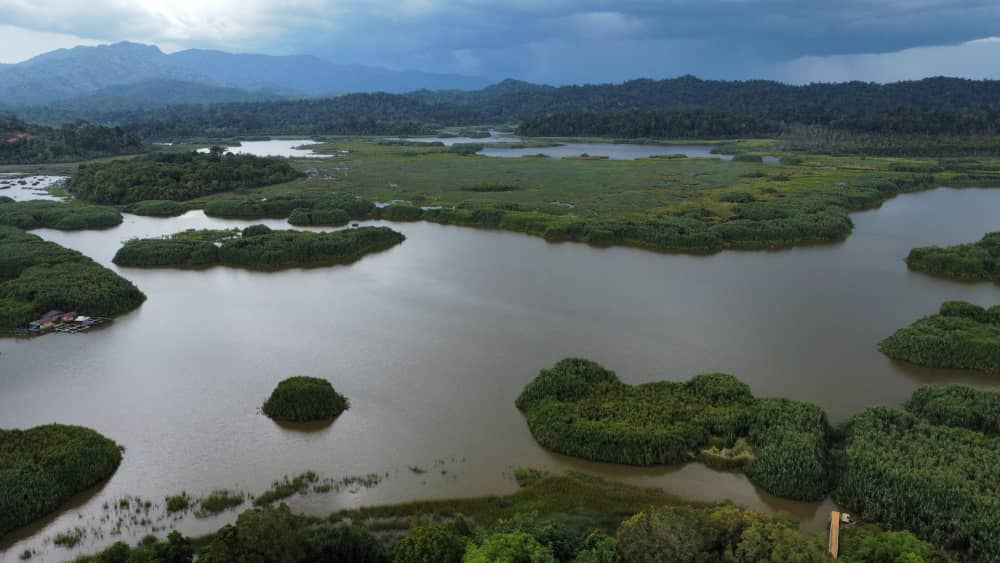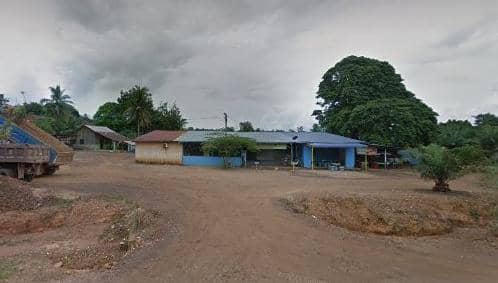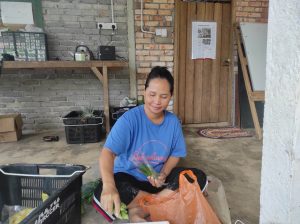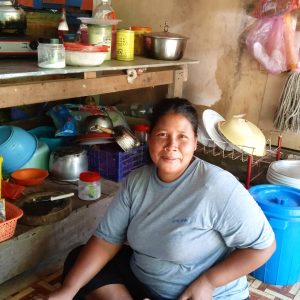Historically, Orang Asli (OA) communities have grappled with educational disparities, primarily due to geographic isolation and economic disadvantages. For generations, OAs have struggled to access quality education perpetuating a cycle of poverty and limiting employment opportunities for their families.

In response to these disparities, the nation has made concerted efforts to improve education access for OA children. These initiatives have led to significant increases in primary school enrollment over the years. However, as of 2021, 42.29% of OA students did not complete their schooling up to Form Five during the pandemic.
Amos, a 21-year-old Melai villager, personally experienced these challenges. Here’s his story.
No Hurdle Too Tough
The young resilient OAs of today, including individuals like Amos, embody a generation driven to break free from the enduring stigma that has long burdened them. They aspire to overcome challenges and carve a brighter future for themselves and their community.
However, the unforeseen obstacle of the COVID-19 pandemic disrupted their path, impacting students nationwide, including Amos, who was nearing the completion of his Form 6 education.

As schools across the nation transitioned to online learning to curb the virus’s spread, Amos found himself navigating the realm of virtual classrooms. While many in urban areas were well-equipped for this transition, it presented unique challenges for Amos and his community in Melai, a remote area with unreliable Internet access and limited telephone connectivity. These technological barriers created hurdles for Amos’s education, but his determination to succeed remained unwavering.
I resorted to leave the village to attend classes where Internet access is more reliable because in the village, both internet and telephone reception is hard to get and not stable. – Amos
Staying Close To The Community
After completing his Form 6 education, Amos made the choice to forgo further academic pursuits. His decision is not uncommon, considering that only 10% of Orang Asli youth pursue university education, and an even smaller number opt for technical and vocational education and training (TVET). Many who venture outside their villages often return due to the limited job opportunities available for the youth.
Amos chose to stay close to his home and pursue a profession that allowed him to give back to his community. When the opportunity arose, he embraced it without hesitation.
I decided to work with OA Organik in Melai because it’s my village, and the job allows me to assist fellow villagers. – Amos
As a dedicated Research and Development staff member with OA Organik, Amos finds both fulfillment and challenges in his work. He also helps to cultivate the community garden.

I’ve acquired new skills in gardening, particularly in fertilising vegetables, using organic fertilisers, maintaining borders, and sowing seeds according to the type of vegetables. – Amos
In recent years, opportunities for OA youth to actively engage with and contribute to their communities have been increasing. In the northern states of Malaysia, OA youth are also actively participating in tiger conservation efforts. In Selangor, some take pride in showcasing their heritage and culture by working as tour guides in ecotourism ventures.
Growing Ambition
For Amos and the youth in Melai, a job that allows them to stay close to home, provide a sustainable livelihood, and benefit the broader community is a cherished opportunity.
As a young man, Amos is brimming with hope and aspirations, both for his personal journey and the betterment of his village. His watchful eye is always on the lookout for untapped opportunities, and recently, he has been exploring the potential of beekeeping and fish farming.
We could start kelulut beekeeping and freshwater fish farming ventures here in Melai. – Amos
Driven by an unwavering sense of responsibility to his community, this young man aspires to ignite a wave of positive change. Yet, Amos acknowledges that he is among the fortunate ones who have been provided an opportunity through OA Organik, while many other OA youth continue to grapple with the search for similar pathways. Given the chance, numerous other OA youth could thrive and contribute to their communities, just like Amos.
SOURCES:
1.Bernama (2022). High dropout rate among Orang Asli schoolchildren cause for concern. New Straits Times. Link
2. F. Zainudin. (2023). Lack of jobs holding back Orang Asli youths, says senator. Free Malaysia Today. Link


